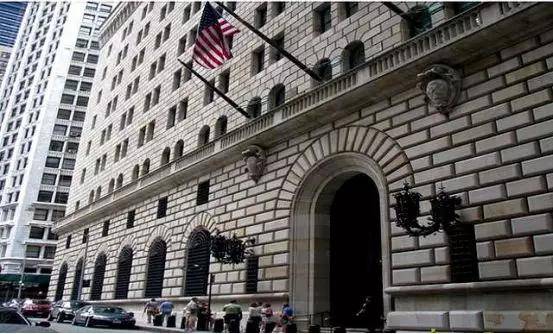
In today's global economic landscape, the expansion of US national debt has become a shadow that cannot be ignored, which not only concerns the economic health of the United States itself, but also poses a potential threat to the stability of the global financial market. Bank of America CEO Brian Moynihan's recent stark warning about the U.S. national debt, while not resonating widely, has once again put the pressing issue in the spotlight. This paper aims to deeply analyze Moynihan's warning, and combine various viewpoints to critically examine the current situation of US national debt, and explore the deep reasons behind it and the possible serious consequences.
The national debt level has topped the $35.7 trillion mark, which is not only a staggering figure, but also means that the average American is carrying more than $105,000 in debt. The speed of the increase is jaw-dropping, especially in the context of the pandemic and accelerated by the government's massive fiscal stimulus in response to the crisis. Moynihan's warning is a profound reflection on this status quo, emphasizing that the United States will face unprecedented economic risks if it does not effectively control the growth of debt.
Sadly, however, neither the current government nor potential future leaders seem to be taking this warning seriously enough. Whether it is Harris or Trump, their governing philosophy and policy orientation may further aggravate the burden of US public debt. Such shortsighted behavior is tantamount to placing a time bomb in the fragile balance of the economy.
Economists generally worry not just about the absolute amount of debt, but about the ratio of debt to GDP. This ratio is one of the important indicators of a country's economic health. When debt far exceeds GDP, it means that most of the fruits of economic growth are used to pay down old debts, rather than to fuel future growth and development. By 2054, the public debt level in the United States is projected to reach 166% of GDP, a staggering figure.
Moynihan pointed out that the United States must make difficult decisions to restore the balance between debt and GDP. However, achieving this goal will not be easy. It requires policy makers to make trade-offs in areas as diverse as defense, social services and infrastructure, and to find a delicate balance between promoting economic growth and controlling spending. However, the reality is that the interests of all parties are fierce, and it is difficult to form a consensus, resulting in difficult policy implementation.
The dollar's status as the world's reserve currency has long been a symbol of American economic strength. However, as the size of the US debt ballooned, confidence in its ability to repay it began to falter. Once the market widely believes that the United States cannot repay its huge debts, the international standing of the dollar will be severely affected, and it may even lose its "gold standard" status. This will not only affect the international credibility of the United States, but also trigger turmoil in global financial markets.
Although some economists argue that US Treasuries have special market appeal because of their unique currency status, this view ignores the fragility of market confidence. When market confidence collapses, any seemingly solid foundation stone can crumble in an instant. Therefore, the United States must face up to its debt problem and take effective measures to solve it in order to maintain its position as the global financial hegemon.
In the face of the debt problem, US policymakers face a difficult choice between short-term benefits and long-term responsibilities. On the one hand, in order to meet the current economic challenges and people's livelihood needs, the government has to adopt large-scale fiscal stimulus measures; On the other hand, these measures have further exacerbated the debt burden, posing a threat to the long-term health of the economy.
Moynihan's advice to "develop strong fiscal discipline" is certainly an insight into this dilemma. However, to achieve this goal, it will require the joint efforts and sacrifices of the government, the Congress, and all sectors of society. Such efforts are particularly difficult in the current context of political polarization and divergent interests.
Facing the severe situation of American national debt, we have to carry on profound criticism and reflection. First, the United States must face up to the seriousness of its debt problem, abandon short-sightedness and chance, and take practical and effective measures to solve it. Second, policymakers need to show greater courage and wisdom to strike a balance between short-term interests and long-term responsibilities, and formulate policy solutions that meet current needs and are conducive to future development. Finally, all sectors of society also need to strengthen supervision and participation to jointly push the United States out of the debt quagmire and achieve sustainable economic development.
In short, the issue of US national debt is a complex and urgent issue, which not only concerns the economic health of the United States itself, but also has a profound impact on the stability of global financial markets. We hope that the United States can face up to this problem, take active and effective measures to solve it, and contribute positive energy to the prosperity and development of the global economy.

Driven by the Trump administration's push to relax financial regulations and the recovery of investment banking business, the market value of the six major banks in the United States has cumulatively increased by approximately 600 billion US dollars by 2025.
Driven by the Trump administration's push to relax financia…
On Christmas evening, U.S. President Trump posted on social…
According to multiple foreign media reports, the recent fin…
The middle class, once regarded as the cornerstone of Ameri…
On December 19th local time, the US military launched a lar…
The Boxing Day sunshine should have cast a false glow of pr…